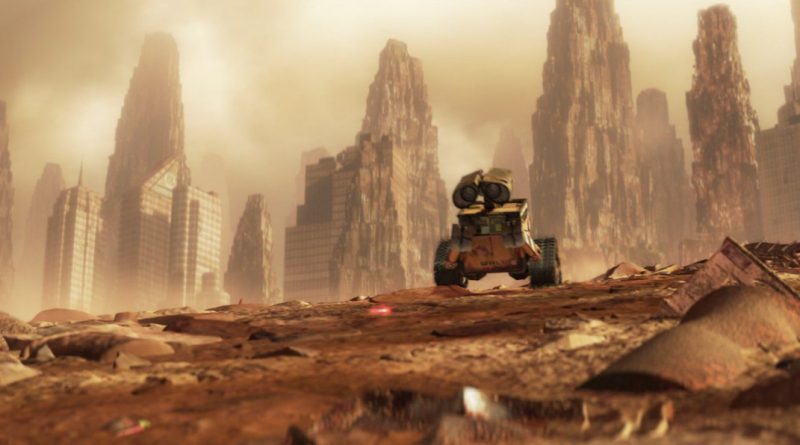WALL-E: A classic that never gets old
Released in the United States on June 27, 2008, “WALL-E” is a science fiction film produced by the renowned Pixar Animation Studios for Walt Disney Pictures. Pixar has built a reputation for its flawless animation quality and the ability to weave heartwarming narratives that resonate deeply with audiences, often evoking a sense of nostalgia. This skilful storytelling makes their films not only entertaining but also effective at conveying important messages to the public about humanity, the environment, and our connections to one another. In addition to “WALL-E,” Pixar has produced numerous global box-office hits, including beloved titles like “Toy Story,” which revolutionized animated filmmaking, and “Inside Out,” which explores complex emotions in a relatable way.
A unique story

This visually beautiful film set in the theoretical 29th century starts off with striking landscapes describing a world where humans’ efforts to try fixing their numerous problems, mainly waste management and mass consumerism, were not enough.
We follow a small, rust-covered robot, called WALL-E, going around this garbage-strewn wasteland diligently collecting scraps and neatly storing them. We slowly learn that WALL-E is the last of many robots designed as one final effort from humans to try to do something about the never-ending waste. One day, however, his routine is broken by the sudden arrival of another sleeker, newer robot called EVE. Immediately, a strong connection is made between the two, as WALL-E shows EVE his collections of trinkets and EVE in turn continues scanning for possible signs of life, since she is designed to check if earth is once again a suitable place for life to start anew.
As they go through WALL-E’s various collections, EVE’s focus is drawn to a small seedling. Having been programmed to search for any lifeforms, she locks the plant in her system and goes on automatic standby for what could be months. WALL-E, confused by her sudden inactivity, keeps her company until she eventually turns back on. Unfortunately, she has to bring back this evidence to the spaceship, which means having to leave WALL-E, but unwilling to let go of her hand, EVE takes him along with her to where humans have evacuated: a spaceship called Axion. On entering the spaceship, WALL-E is thrown into the modern world, one reliant on technology and heavily influenced by the dominant mega-corporation, BnL. WALL-E and EVE will have to look for a way to make Axion take them back to Earth to plant the seedling, their final hope of saving the decaying Earth.
Striking themes

Environmentalism plays a huge role in this movie, as it not only effectively shows what challenges we already face and the issues we will have to deal with, but it also gives us an idea of what could happen if we continue ignoring these problems. Giving us visual images is one of the most effective ways this film could make us realise we have to change our actions, and Pixar utilises this in every detail. The scenes in which monumental garbage towers make skyscrapers look two stories tall gets us thinking: “could this really happen?”. Not only does it convey this message successfully, but it does so using barely any verbal communication between the characters. None of the robots have voices, and instead communicate with body language and robotic sounds.
This is why, even though the movie in itself was made quite a long time ago, the poignant message it delivered continues to inspire people to act differently in their day-to-day lives and changes the way we look at our world. Truly, a movie worth watching.
Sam Romero / S5ENB / EEB1




